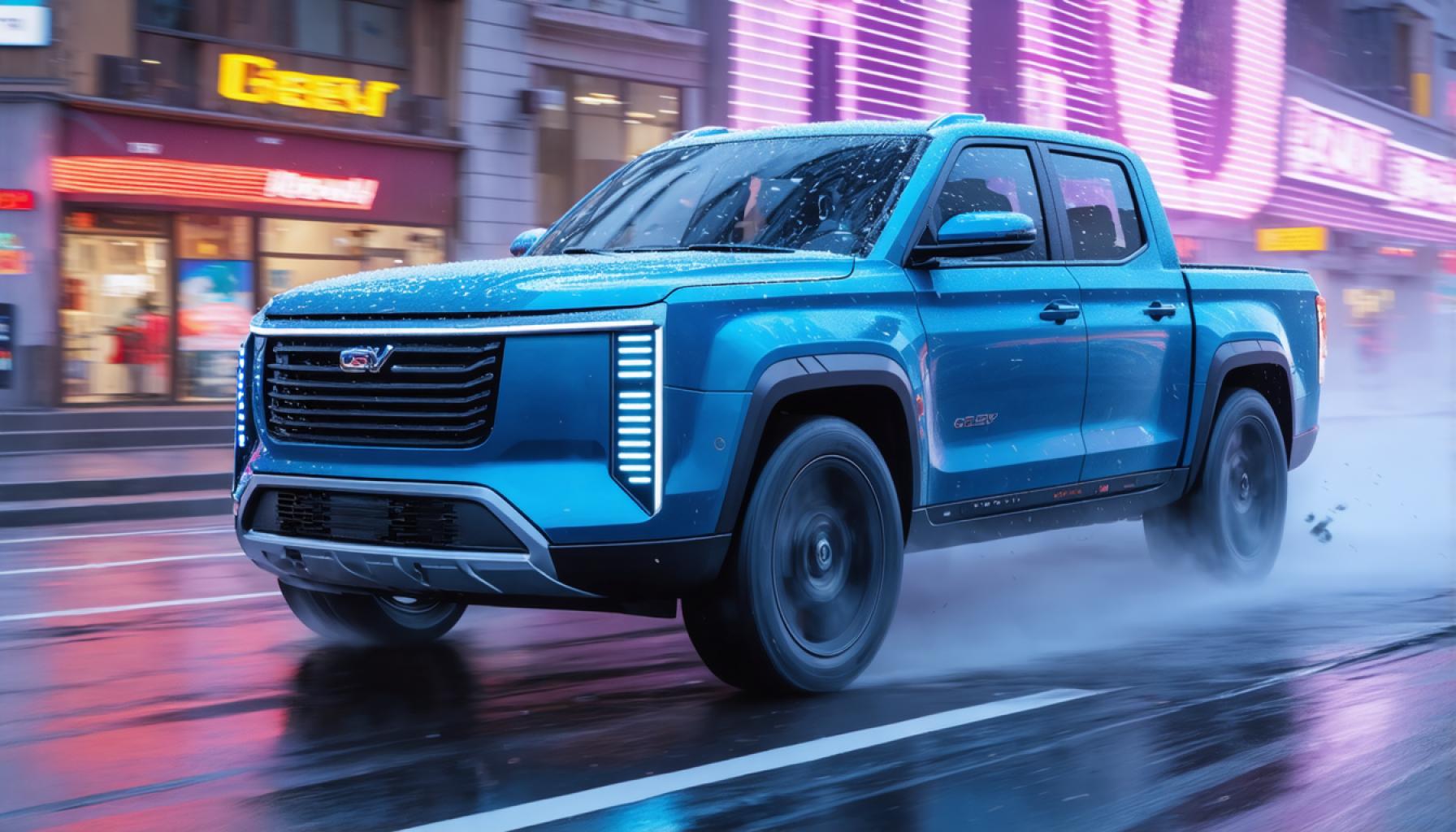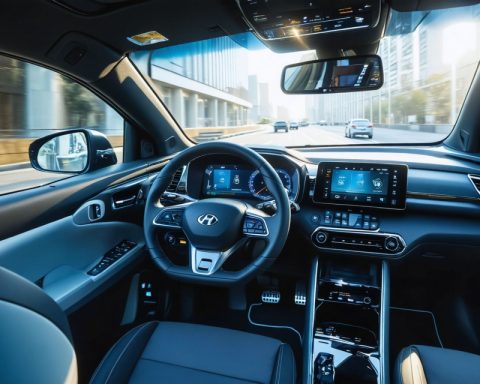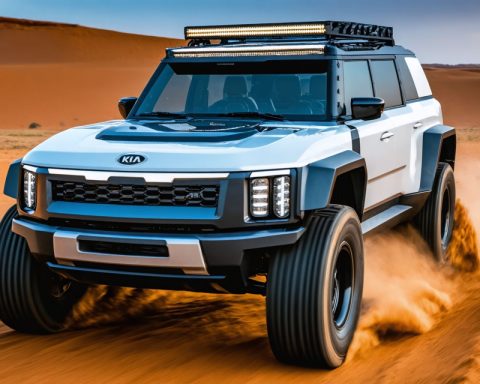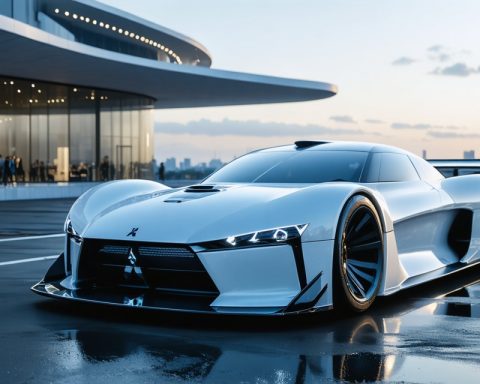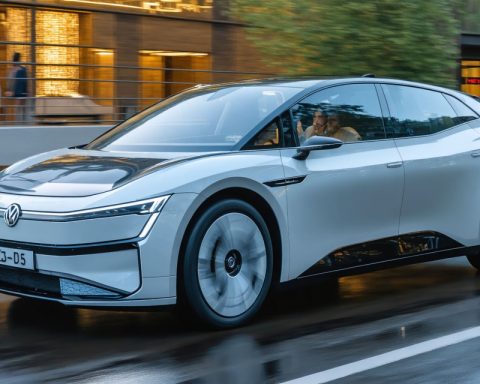- Geely is entering the Australian market with the Riddara, an electric ute with a PHEV variant designed for local conditions.
- Riddara aims to balance electric and petrol power, addressing range anxiety and adapting to Australia’s challenging terrains.
- The market is competitive with emerging rivals like the BYD Shark 6 and GWM Cannon Alpha PHEV, hinting at a growing preference for hybrids.
- Geely targets established brands like Ford and Toyota, suggesting plans for a wider range of ute models.
- This move is more than selling cars; it’s about influencing consumer ideologies and reshaping perceptions in Australia’s automotive sector.
- The anticipation around the Riddara reflects a shift towards a sustainable and flexible future in mobility solutions.
Underneath Australia’s expansive blue skies and through its bustling cities, a seismic shift is priming the nation’s automotive landscape. Geely, a titan in the realm of innovative mobility solutions, is poised to launch a new contender that could reshape the narrative of Australia’s much-loved utes. Enter the Riddara—Geely’s armament in the electric revolution, bearing the promise of a PHEV variant tailored precisely for Australian conditions.
Cracking the Market with Precision
The Riddara ute is already a familiar face in China, sold under the Radar RD6 moniker, but it’s now brewing excitement Down Under. While the Chinese variant runs purely on electricity, the Australian modal cursorily sits at the confluence between petrol and electric. The prospect of a PHEV, designed to ease range anxiety and cater to the taste of Australian terrain, proposes a game-changer. Imagine the strenuous Outback, where charging stations are as rare as a eucalyptus tree in the desert—the Riddara PHEV seeks to blend the power of electric without the limitation in the vast expanses or remote corners.
The Battle of the Backroads
The incursion into Australia isn’t without precedent. The BYD Shark 6 has already waded into the waters, aiming for the sought-after ute status among popular bands. Following closely, others like the GWM Cannon Alpha PHEV pave the way, while the Ford Ranger PHEV holds promises for mid-year traction. Yet, Australia’s preference leans visibly towards hybrids, seen in the Shark’s imminent ascent as a top-seller by 2025. It’s within this competitive milieu that Geely eyes its opportunity; a calculated entry where the demand is palpable but only partially satisfied.
Speculative Whisperings and Confirmed Ambitions
Geely’s intent is implicitly clear—prepare an assault on the strongholds of Ford and Toyota, both with entrenched footings in the ranger leagues of the market. CEO Li Lei’s guarded optimism hinted fervently at a future not limited to a singular model but broadened to encompass the full breadth of the ute spectrum. When pressed, Lei artfully sidestepped specifics, maintaining an aura of mystery yet confirming the energetic stirrings within the halls of Geely’s strategic domains.
Navigating the New Frontier
Australia’s roads tell stories; one in five new car purchases is a ute, and in a nation that venerates utility, Geely’s impending arrival represents not just an addition but a revolution. Early sales indicators underscore the hybrid appeal, acting as a balm for those wary of the pure EV’s constraints. It’s an intelligent segue—offering the robust, trusty diesel an electric companion to redefine travel in both urban and rural landscapes.
As anticipation builds, the tale isn’t merely about selling cars—it’s a narrative rich in shifting consumer ideologies, evolving geographies, and the palpable excitement of a new player ready to disrupt, challenge, and ultimately change the way Australians think about what’s possible from a vehicle.
For the Distance, For the Durability
In this evolving chapter of automotive history, Geely steps forward with more than just vehicles. They bring the allure of cutting-edge technology laced with the promises of reach, reassurance, and reinvention. As they pare roof racks with hybrids and ambition with action, the hope for a more sustainable, flexible future reborns on roads made to endure—roads that embrace the electricity of change.
Introducing the Future of Utes in Australia: Geely’s Electric Journey
Australia’s automotive landscape is on the brink of transformation as Geely launches its innovative Riddara ute. This introduction is set to revolutionize the much-loved utility vehicle (ute) segment, particularly with the integration of a Plug-in Hybrid Electric Vehicle (PHEV) designed for unique Australian driving conditions.
Geely Riddara: Features and Specifications
The Geely Riddara, adapted from China’s Radar RD6, promises an electric revolution in the Australian market. Here’s a closer look at the anticipated features:
– Dual Power Sources: The Riddara is set to feature a PHEV system that combines both petrol and electric power, addressing range anxiety in remote areas where charging infrastructure is sparse.
– Adaptability and Design: Tailored for both urban and rugged terrains, the Riddara will likely include advanced technology to ensure efficiency on Australia’s vast expanse of roads.
Market Context and Competitive Landscape
Geely’s decision to enter the Australian market comes amid a growing demand for hybrid vehicles. According to current trends and market forecasts, hybrids are set to become a top preference. Here’s why:
– Competitive Models: The Riddara will compete against established models like the BYD Shark 6, GWM Cannon Alpha PHEV, and the forthcoming Ford Ranger PHEV, each offering unique features catering to different consumer needs.
– Market Dominance: Brands like Ford and Toyota have strong footholds in this segment. However, Geely’s strategic entry seeks to leverage a gap in the hybrid market and consumer shift towards sustainable solutions.
Pressing Questions and Considerations
What Can Australian Consumers Expect from Geely?
Geely aims to offer more than just an electric vehicle; it proposes a versatile, tech-forward option that aligns with environmental goals and utility needs.
– Environmental Impact: The adoption of PHEVs like the Riddara can significantly reduce emissions while maintaining performance standards, appealing to eco-conscious drivers.
– Economic Viability: PHEVs often provide fuel cost savings and potential government incentives, making them an attractive financial investment over pure petrol vehicles.
Predictions and Future Directions
1. Rising Hybrid Popularity: As infrastructure for electric vehicles improves, expect a stronger shift towards hybrids over the next five years.
2. Innovation in Ute Design: Anticipate more automakers experimenting with new technologies to redefine the traditional ute, focusing on versatility, performance, and sustainability.
Actionable Recommendations for Potential Buyers
– Test Drive Options: Before deciding, test drive multiple PHEV models, including the Geely Riddara, to assess handling and suitability for daily use.
– Evaluate Financing Options: Explore financial incentives specific to hybrid purchases which can offset initial costs.
Final Thoughts
The Geely Riddara represents a bold step into Australia’s ute market, promising innovation and sustainability. As the market evolves, keep an eye on how these hybrids influence consumer choices and geographical reach.
For more insights into automotive innovations, check the latest updates from Geely’s official website at Geely.
